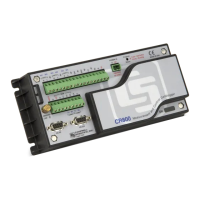Section 7. Installation
144
CRBasicExample20. ConversionofFLOAT/LONGtoBoolean
Public Fa As Float
Public Fb As Float
Public L As Long
Public Ba As Boolean
Public Bb As Boolean
Public Bc As Boolean
BeginProg
Fa = 0
Fb = 0.125
L = 126
Ba = Fa 'This will set Ba = False (0)
Bb = Fb 'This will Set Bb = True (-1)
Bc = L 'This will Set Bc = True (-1)
EndProg
FLOAT from LONG or Boolean
When a LONG or Boolean is converted to FLOAT, the integer value is loaded
into the FLOAT. Booleans are converted to -1 or 0. LONG integers greater than
24 bits (16,777,215; the size of the mantissa for a FLOAT) will lose resolution
when converted to FLOAT.
LONG from FLOAT or Boolean
When converted to Long, Boolean is converted to -1 or 0. When a FLOAT is
converted to a LONG, it is truncated. This conversion is the same as the INT
function (Arithmetic Functions
(p. 475) ). The conversion is to an integer equal to or
less than the value of the float (e.g., 4.6 becomes 4, -4.6 becomes -5).
If a FLOAT is greater than the largest allowable LONG (+2,147,483,647), the
integer is set to the maximum. If a FLOAT is less than the smallest allowable
LONG (-2,147,483,648), the integer is set to the minimum.
Integers in Expressions
LONGs are evaluated in expressions as integers when possible. CRBasic example
Evaluation of Integers
(p. 144) illustrates evaluation of integers as LONGs and
FLOATs.
CRBasicExample21. EvaluationofIntegers
Public X, I As Long
BeginProg
I = 126
X = (I+3) * 3.4
'I+3 is evaluated as an integer, then converted to FLOAT before
'it is multiplied by 3.4
EndProg

